[ad_1]
Etching is a printmaking technique capable of producing atmospheric tonal prints. The technique can be used on its own or combined with many others – there are endless creative possibilities. In this article we describe how to get started with etching and explain the various materials and tools you need to create your first print.
Contents
Materials to Get Started in Etching
What is Etching?
Etching is an intaglio printmaking technique, where acid or other corrosive chemicals are used to incise lines or marks into a metal plate. An acid resistant ground (or resist) is applied to the surface of the plate, and an image is scratched or drawn through the ground to expose the metal underneath it. The plate is then placed in an acid bath for a period where exposed marks are etched away. Ink is applied to the plate, and pushed into the etched lines before being placed in a press, where it is printed onto damp paper. The resulting prints often have rich, velvety lines and a range of tones which stand alone or can be combined with a range of other printmaking techniques.
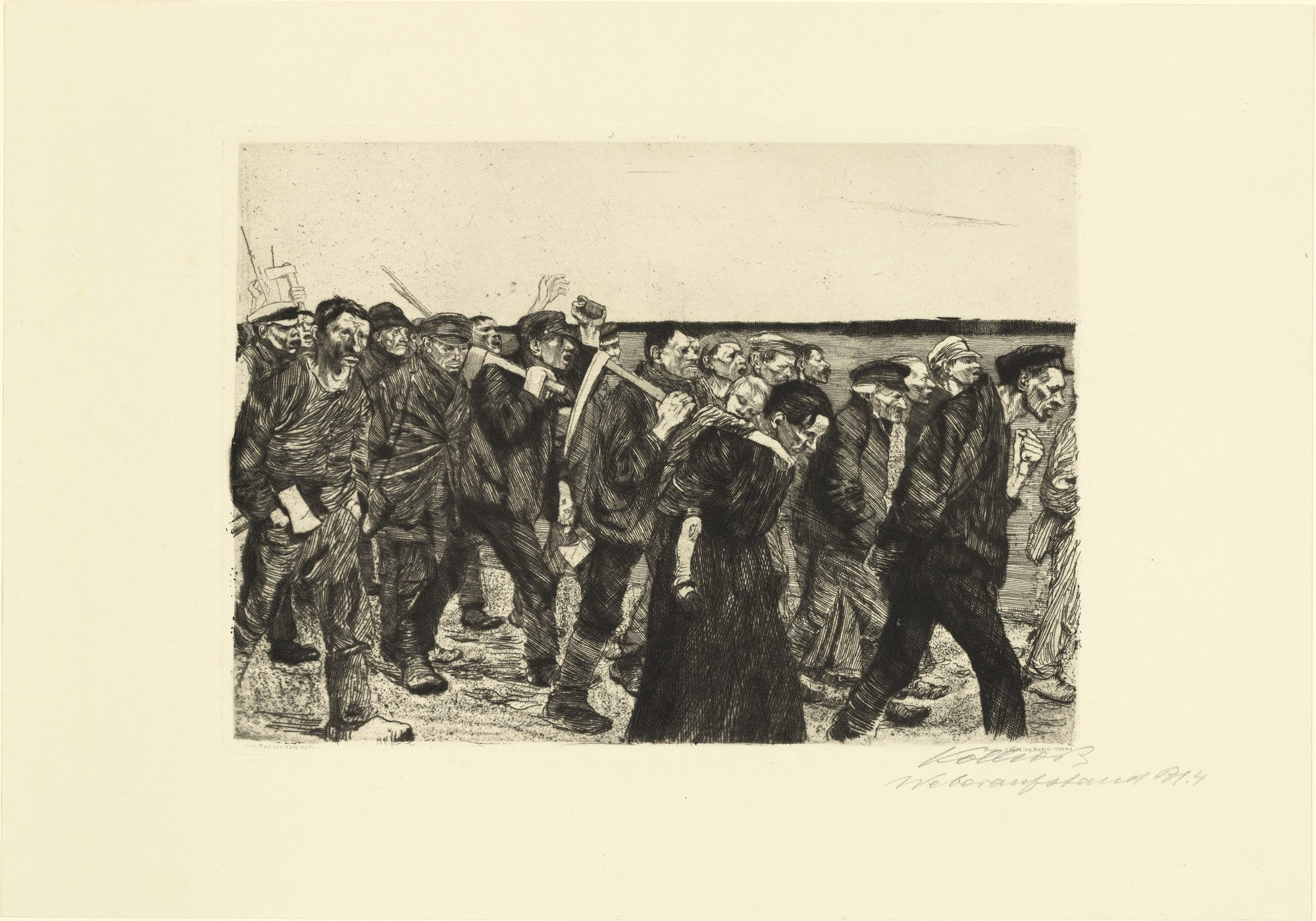
March of the Weavers, 1893-1897, published c. 1931
Kathe Kollwitz
Etching, 31.2 x 44.7 cm | 12 5 in x 17 5 in
The History of Etching
Etching began in the sixteenth century, but it wasn’t until the seventeenth century and the advances in chemistry that the technique really took off. Jacques Callot, a European printmaker, developed tools and techniques which really expanded the possibilities for artists. Rembrandt took etching to a new level, and it was a perfect medium for his dramatic tonal prints. In the seventeenth and eighteenth centuries, the technique was popular with artists as diverse as William Hogarth, Giovanni Battista Piranesi and Francisco Goya. More modern artists that pushed the technique include Pablo Picasso, Käthe Kollwitz and Norman Ackoyd.

Descent from the Cross by Torchlight, 1654
Rembrandt van Rijn
Etching and drypoint; first of four states, 23.8 × 17.8 cm | 9.3 in × 7 in
Materials to Get Started in Etching
Here’s a selection of materials to get you started in etching. Open-access print studios provide many of the facilities such as presses and etching baths, and may also have technicians on hand for support.
Etching plate
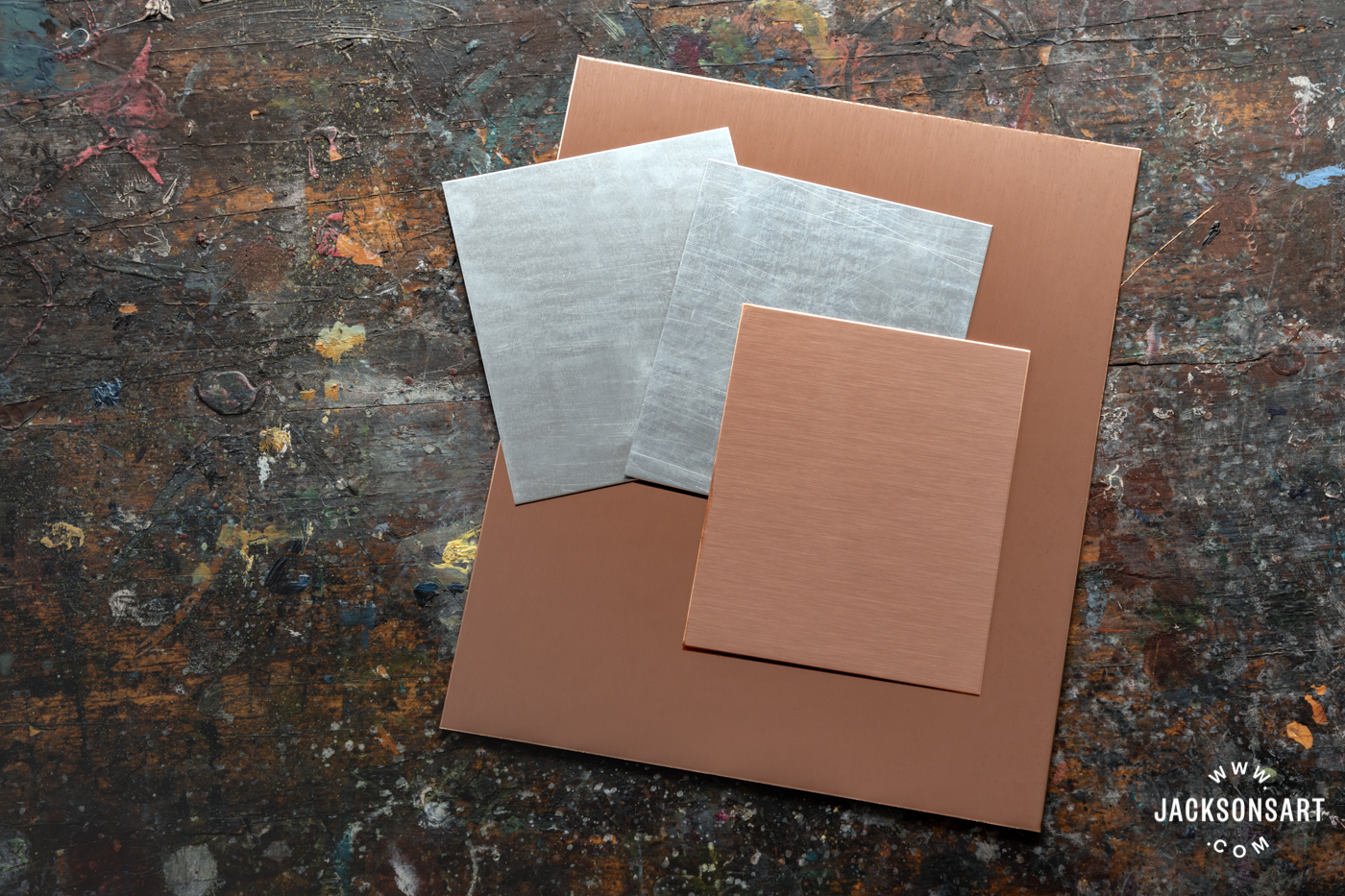

L – R:
Jackson’s Economy Zinc Etching Plates 0.8mm Thick,
Jackson’s Polished Copper Etching Plates 0.9mm Thick
Etching plates are most commonly made from zinc or copper. Copper plates are the traditional choice due to their even texture and longevity – this is particularly important for large editions. Polished copper plates are protected with a plastic film, and require degreasing with vinegar and whiting or calcium carbonate prior to use. Zinc is a slightly softer metal and therefore not as durable, but it is a good, less expensive choice for beginners and students. Zinc economy plates will require polishing with a metal polish and degreasing.
Etching Grounds or Resists
Traditionally, an etching plate was etched with acid so required an acid resistant ground made from beeswax and asphaltum with a solvent. In the 1990s, printmakers began developing less toxic methods of etching using safer materials.
The etching plate can be covered with a hard ground or a soft ground. A hard ground is applied to the plate with a roller, and the image is scratched into the surface with an etching needle or other mark making tool. Soft ground is applied with a brush and since it never really hardens, can be used to make soft painterly marks, or to create impressions from objects (for example leaves, textured stencils etc).
Acrylic/Ink Resists
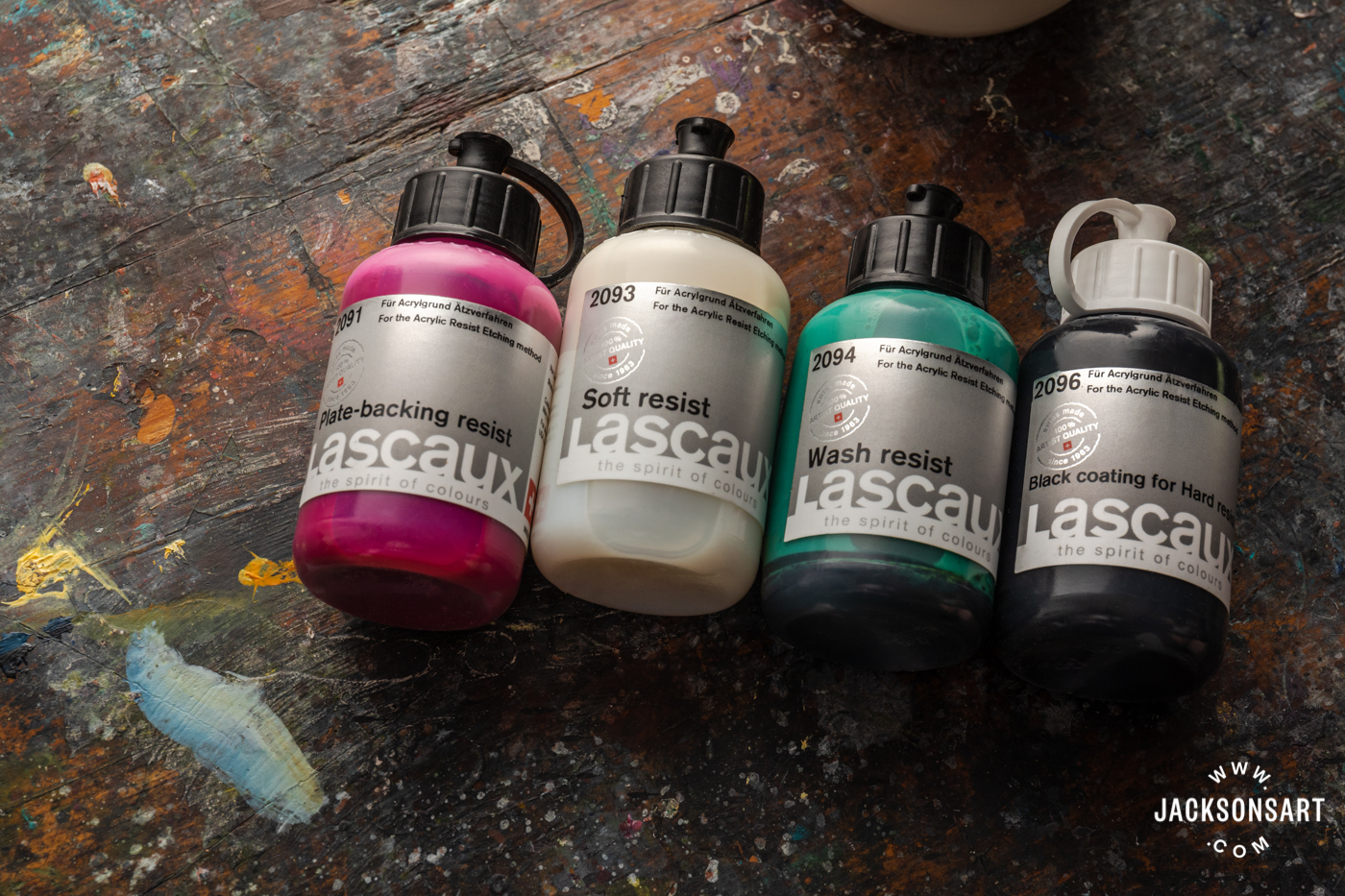

Lascaux Etching Mediums
The Lascaux acrylic resist etching system is a full range of solvent free, watersoluble and non-toxic products that can be used instead of traditional acid based products. It includes a plate backing resist (for protecting the back of the plate from the etching solution), hard and soft resists and stop out resist which can be painted onto a plate to create an image, make corrections or prevent areas from being etched. B.I.G Etching Ground is a non-toxic ink based resist. This ground makes it possible to experiment with many different effects on an etching plate, and it can act as a soft or hard resist. The resist can be heat set in an oven, and is available in two colours. Plates can be cleaned up with non-toxic cleaners such as Zest-It Printmakers Washdown. See our blog on Safer Intaglio Printmaking for more information.
Traditional Etching Resists
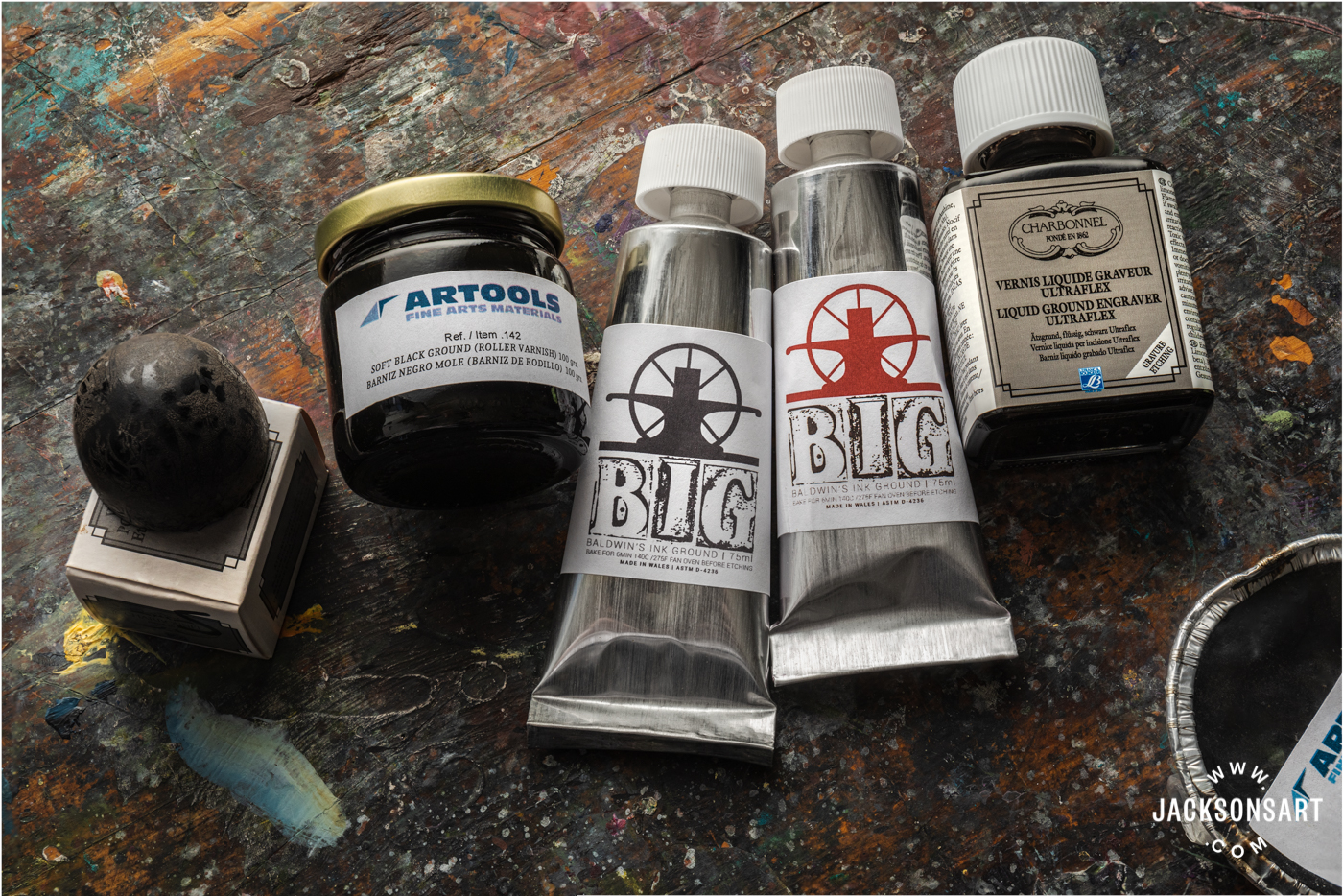
Hard resists can be in solid or liquid form. Charbonnel Ultraflex is a liquid hard ground made with turpentine and wax. It is transparent with a satin finish when dry and can be applied to the plate with a brush or by pouring it directly onto the plate. Artools hard wax ground is a solid lump, which is rubbed directly onto a heated plate and spread with a dauber.
Soft resists are available as a varnish that can be applied to the plate with a roller or a traditional wax ground that is applied with a soft cloth. Button polish and straw hat varnish are shellac based varnishes that can be used to protect the back of the plate. Straw hat varnish has added dye making it easy to see where it has been applied.
Etching Tools
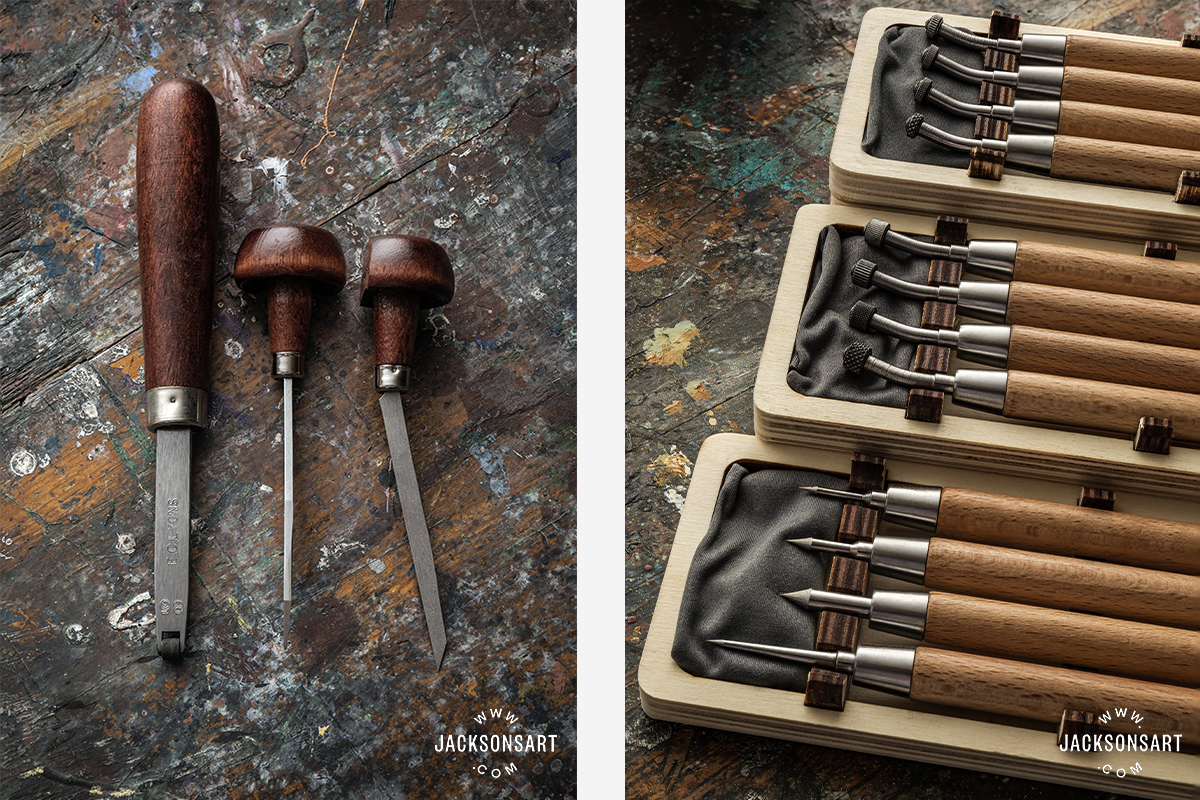
Etching tools of various sizes can be used to make marks in the etching ground. Using a variety of etching needles allows you to create lines of varying widths and depths. It is like using a pen without ink, and they have metal points to scratch into the etching ground. The Arteina drypoint box set contains four steel tipped needles with different point sizes, and wooden handles which are comfortable to grip. The needles can also be purchased individually.
Marks can also be made with roulettes which create a range of textural marks as the wheel is rolled over the plates. Arteina box sets contain four sizes of roulettes in widths of 2 mm or 5 mm. They can also be purchased individually.
Scrapers and burnishers are used to make corrections to the etching plate. The scraper is for lowering the plate surface and scraping away burrs. The burnisher is used to smooth the plate surface and soften the lines. They can be bought as a dual purpose tool, or individually in various sizes.
Etchants
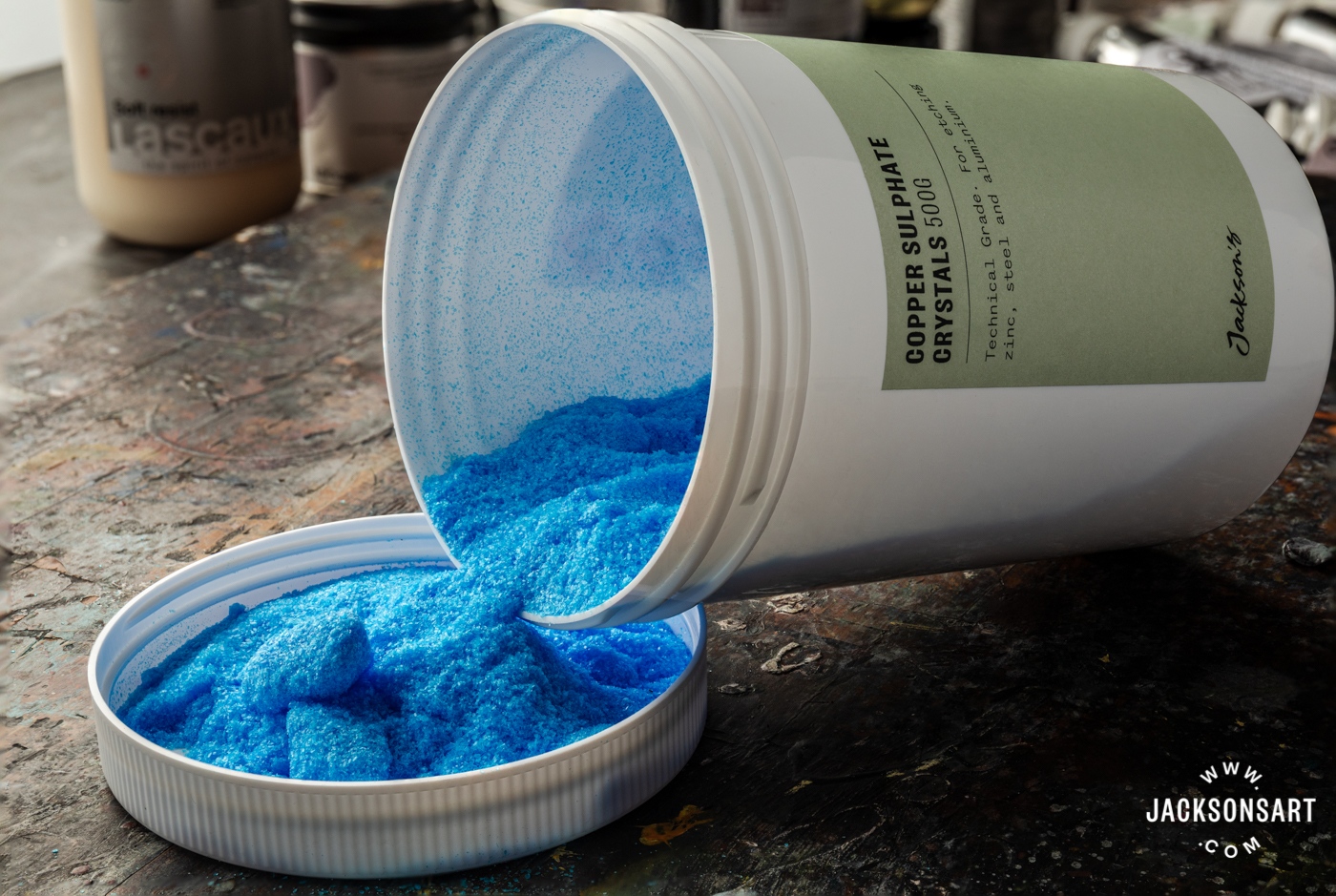
An etchant is the substance used to etch the plate, or bite through the exposed lines or marks to create the image. Traditionally, nitric acid or a mixture of hydrochloric and potassium chloride (known as the Dutch Mordant) were used. However, both these solutions are extremely toxic, which led to the development of new, safer methods.
The ‘Edinburgh Etch’ (© F.K. 1997) method, developed in the 1990s, uses Ferric chloride, a metal salt which can be diluted or used alongside citric acid powder for copper plates. It is not recommended on zinc plates, where a solution of copper sulphate and table salt can be used. For more information, see our blog on Safer Intaglio Printmaking.
Etching Ink
Etching ink is stiff, highly pigmented and designed to stick to the grooves and indentations in the plate. There are a variety of different types and brands of etching ink, and they generally fall into two categories – traditional oil based ink and watersoluble etching ink.
Watersoluble Etching Ink
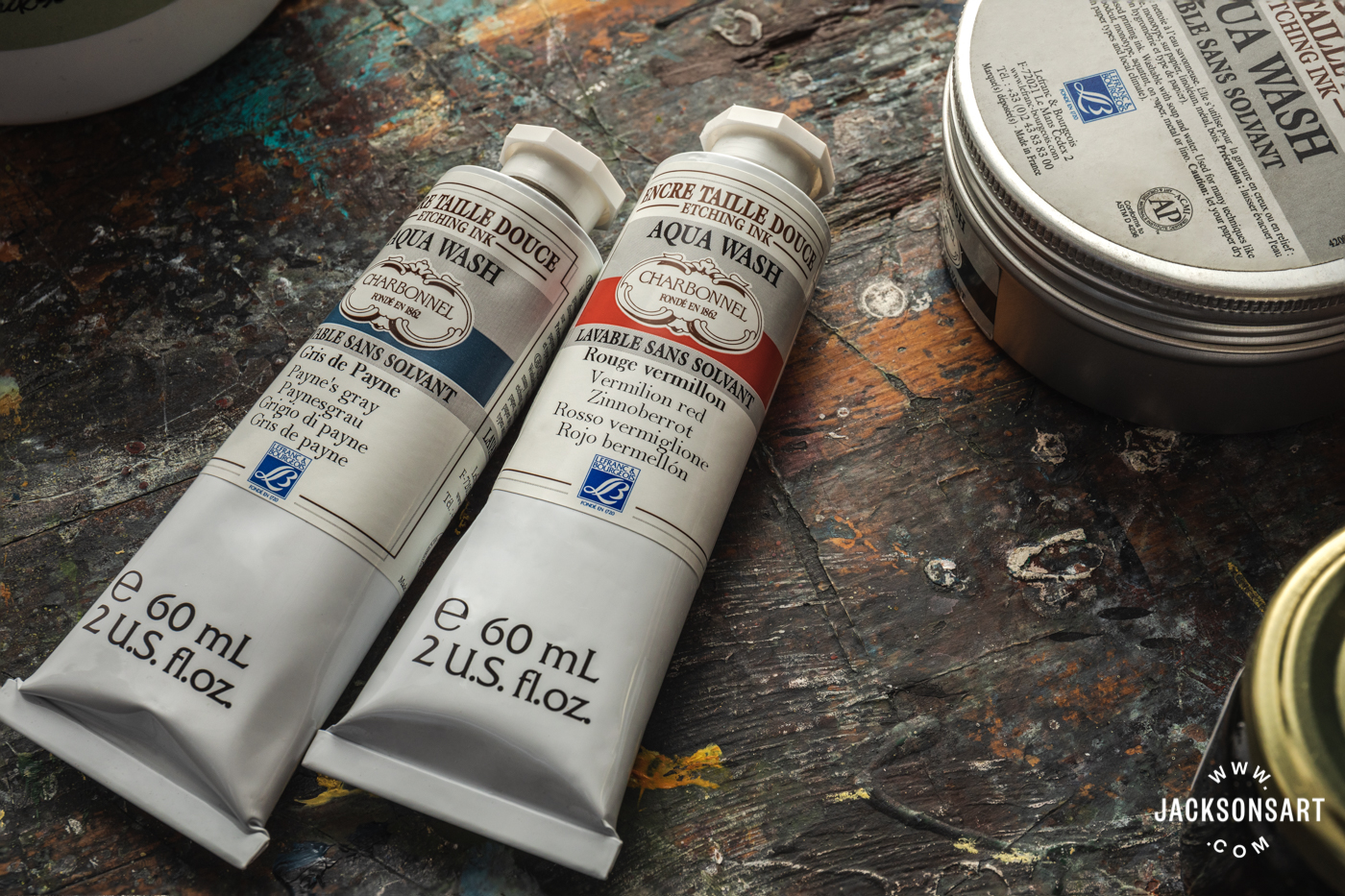

Charbonnel Aqua Wash Etching Inks
Watersoluble etching ink is oil or soy based and can be cleaned up with soap and water, unlike traditional oil based inks. This means they have the richness of colour associated with traditional etching inks, but can be cleaned up without solvents such as turpentine or white spirit. Cranfield Caligo Safe Wash Etching Inks and Charbonnel Aqua Wash are both good quality oil based inks that are also suitable for other intaglio techniques, and are easily cleaned up with soap and water. Akua intaglio ink is a soy based ink which is also easily washed off with soap and water.
Oil-Based Etching Ink
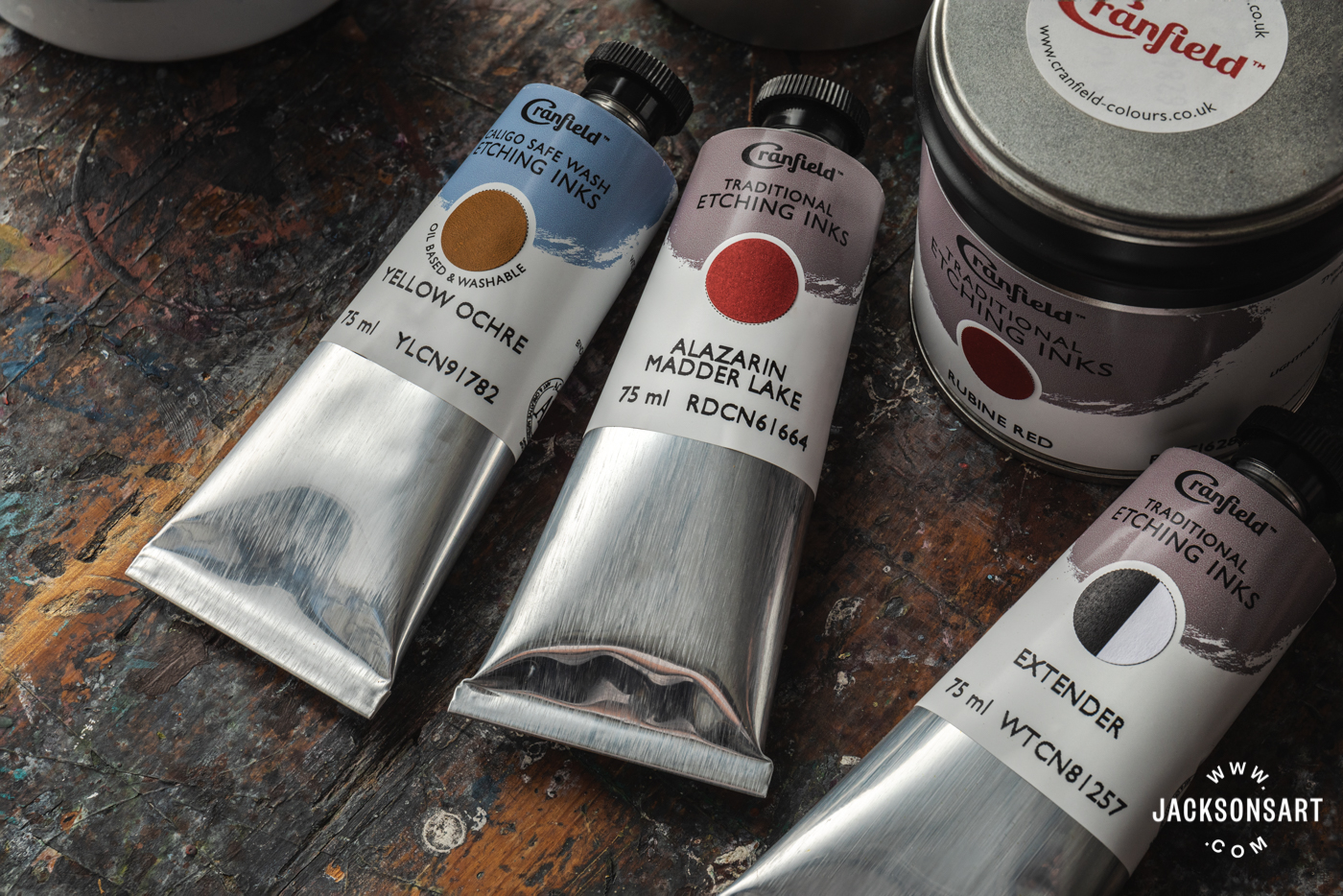
Traditional oil based etching ink contains a high level of pigment, mixed with polymerised linseed oil. Their rich colours make them particularly good for larger plates, and they have a buttery consistency that some printmakers love. Cranfield Traditional Etching Inks come in a wide range of colours and are also suitable for other techniques such as engraving, dry-point, mezzotint, etching and aquatint, as well as monotype.
Inking Slab
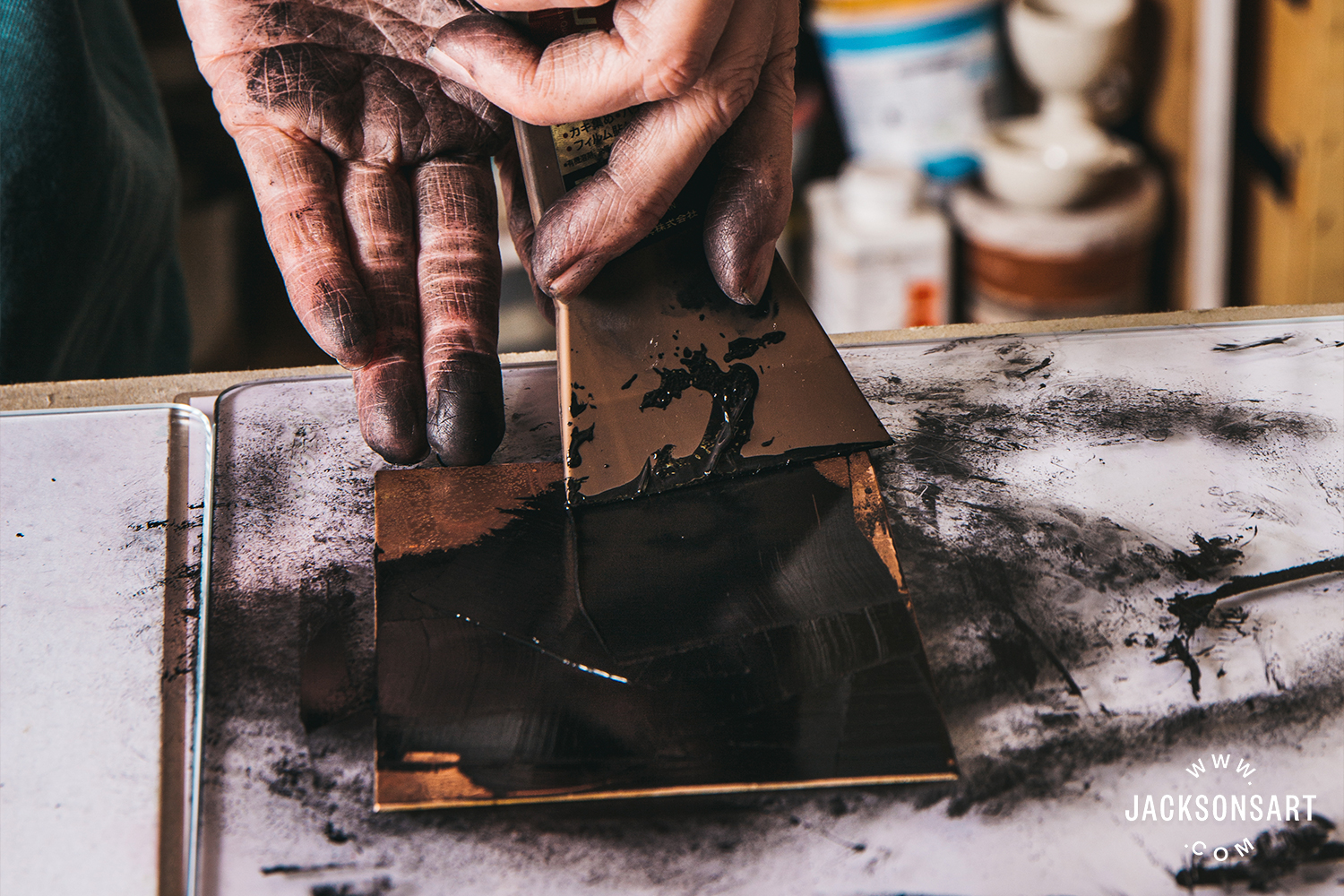

Jackson’s Inking Slab 30 x 40 cm
An inking slab is a smooth, non absorbent slab where you can mix and roll out ink prior to applying to the plate. Ink can be applied with a brush or a roller, depending on the etching ground used.
Etching Press
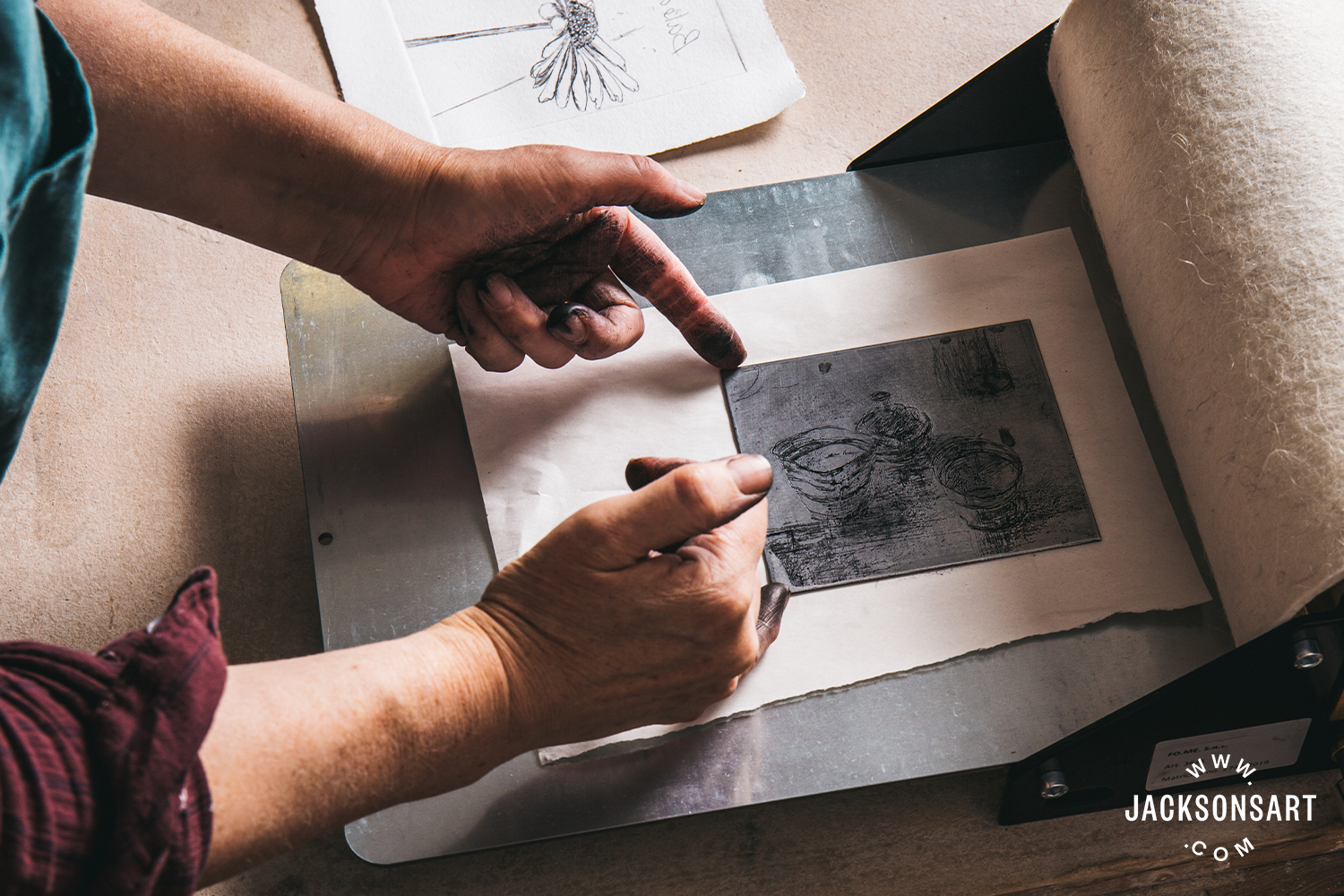

L – R: Fome School Etching Presses, Sláma Press Hand Printing Press
Traditional etching presses have a heavy metal roller attached to a metal bed that slides under it when you turn the handle. Fome etching presses are available in three sizes, have adjustable steel rollers and a metal plate. are small enough to sit on a desktop (they should be attached to the table to prevent slippage) To find out more about setting up a Fome press: Setting Up The Fome Etching Press. An alternative is the handheld Sláma Press, which uses the weight of steel balls to produce an even print. Both Fome and Sláma can also be used for relief printing.
Scrim/Tarlatan
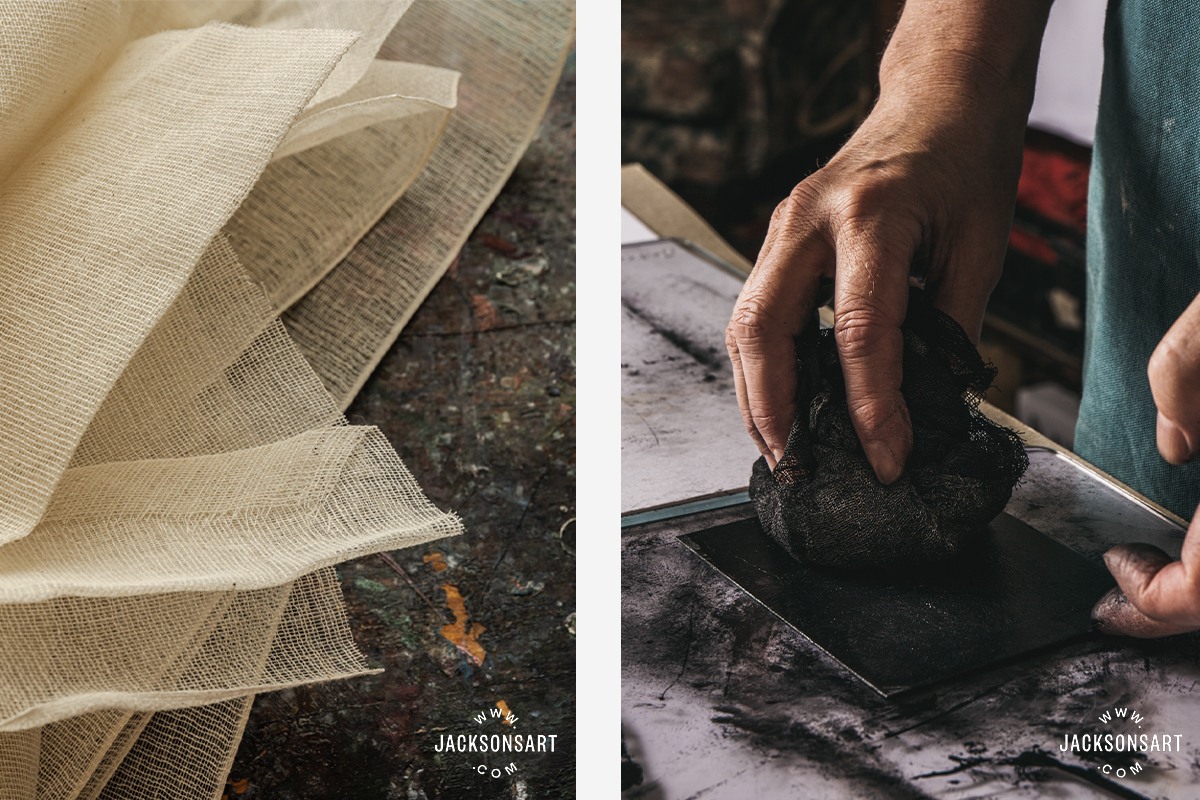

Tarlatan 114 cm Wide Per Metre Sent Folded (Max 10 m Folded)
Scrim is useful for wiping the ink on intaglio plates. It is a fabric made from open weave cotton, stiffened with starch. You can buy it by the metre or in 50 m rolls.
Tissue Paper
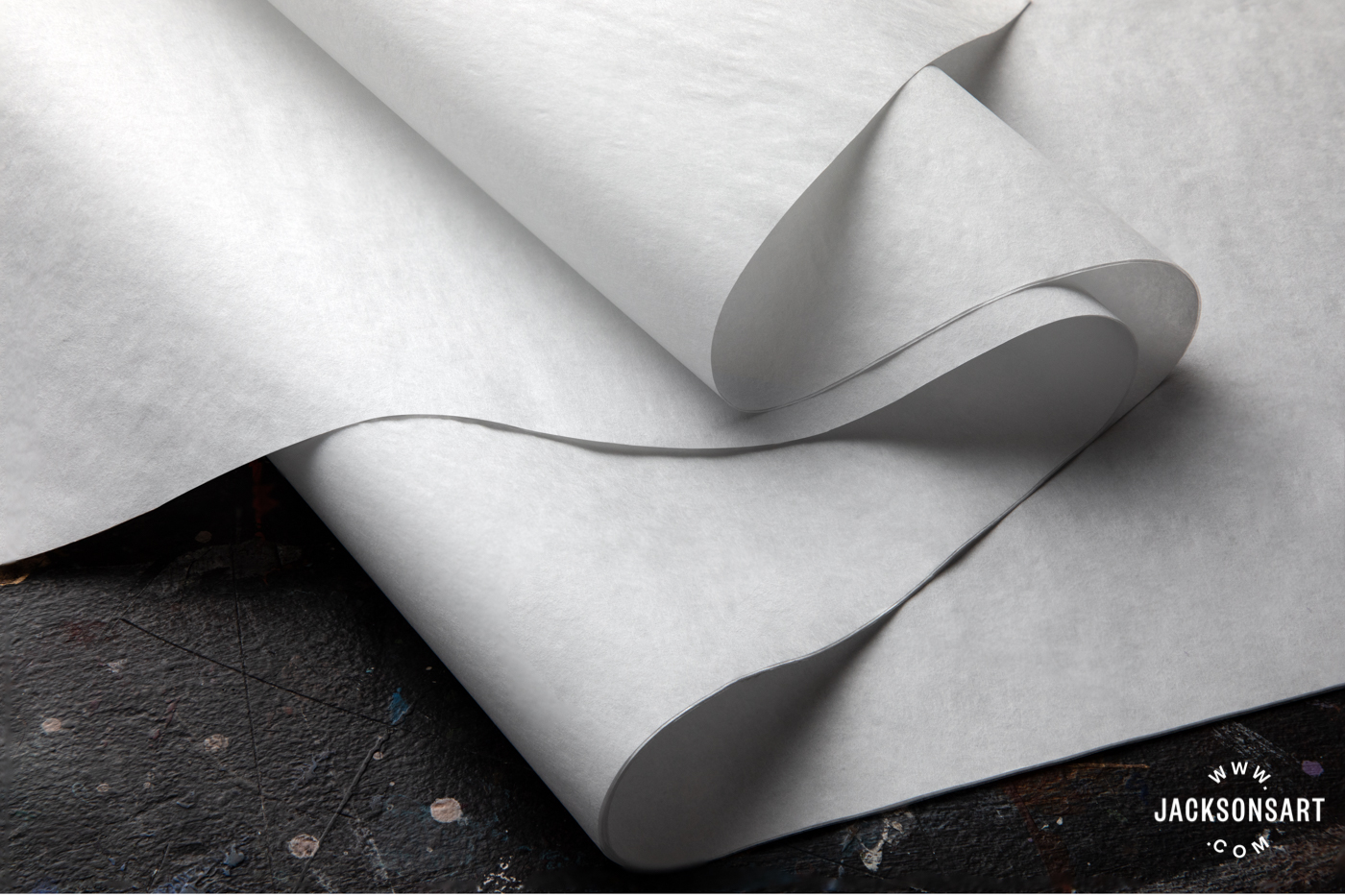

Jackson’s Acid Free Tissue Paper 22 gsm 50 x 75 cm Pack Of 500
Prior to printing, the plate is polished with tissue paper to remove the last traces of ink from the areas that will not be printed.
Chemical Resistant Tray/Water Tray
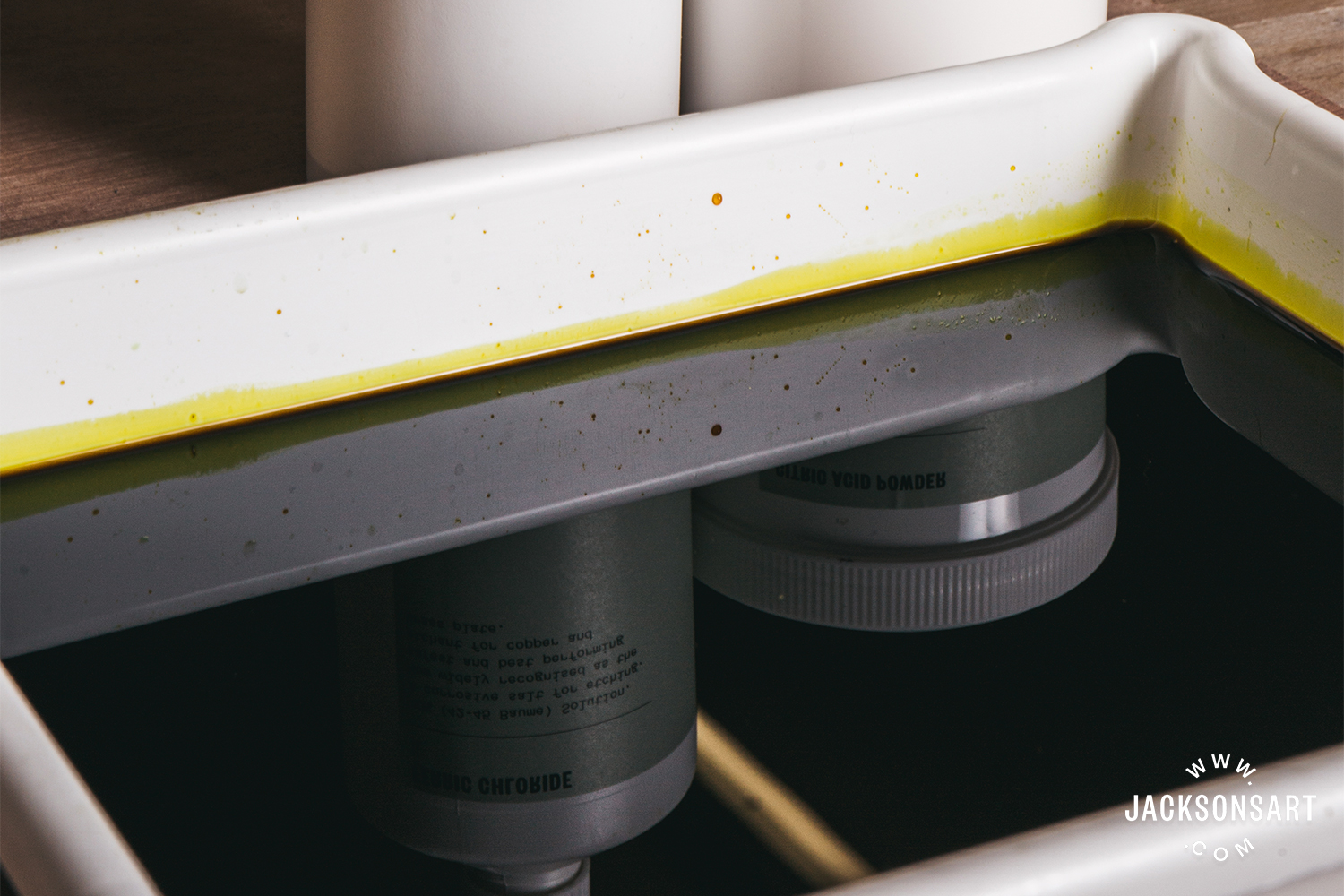

L – R: Polypropylene Tray: 55 x 100 cm, 40 x 53 cm, 80 x 80 cm
A chemical resistant tray can be filled with the etchant solution and used as an ‘etching bath’ to etch your plate and to soak paper in water prior to printing.
Paper for Etching
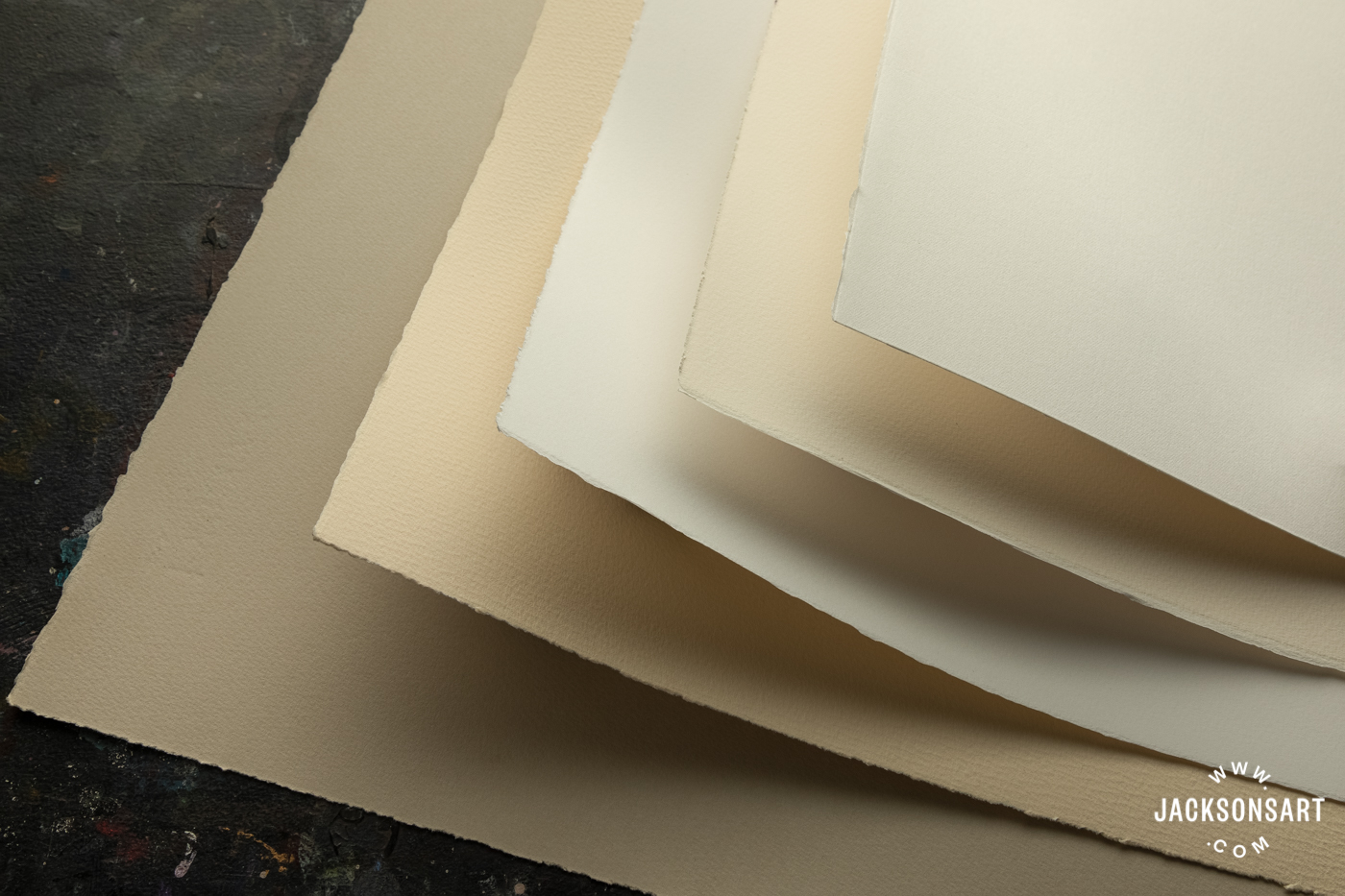

L – R: Somerset 300 gsm Printmaking Paper, Fabriano Rosaspina Printmaking Paper White
Papers used for etching need to be exceptionally strong, even when wet as the printing plate will be embossed into the paper alongside the etched image. They need to be compressible and supple as well as being dimensionally stable such that they won’t distort and affect registration. Heavyweight cotton papers such as Somerset and Fabriano Rosapina are ideal for intaglio techniques. Hahnemühle etching papers are made from 100% alpha cellulose, which makes them soft, pliable and very sensitive to detail.
Safety Equipment

L – R: Gauntlet Chemical Resistant, Safety Goggles Chemical Resistant One Size
Protecting your skin and eyes is essential when etching, as it requires the use of corrosive materials. Nitrile gauntlets are flock lined and chemical resistant when handling etchants and solvents, while lighter weight nitrile gloves or barrier cream helps protect your skin when inking the plate. Chemical resistant goggles are also essential to protect your eyes from splashes.
Cleaning Up
When cleaning up, harsh solvents can be avoided by using vegetable oil and newspaper or a rag, then wiping with a plant-based solvent like Zest-it Printmakers Cleaner.
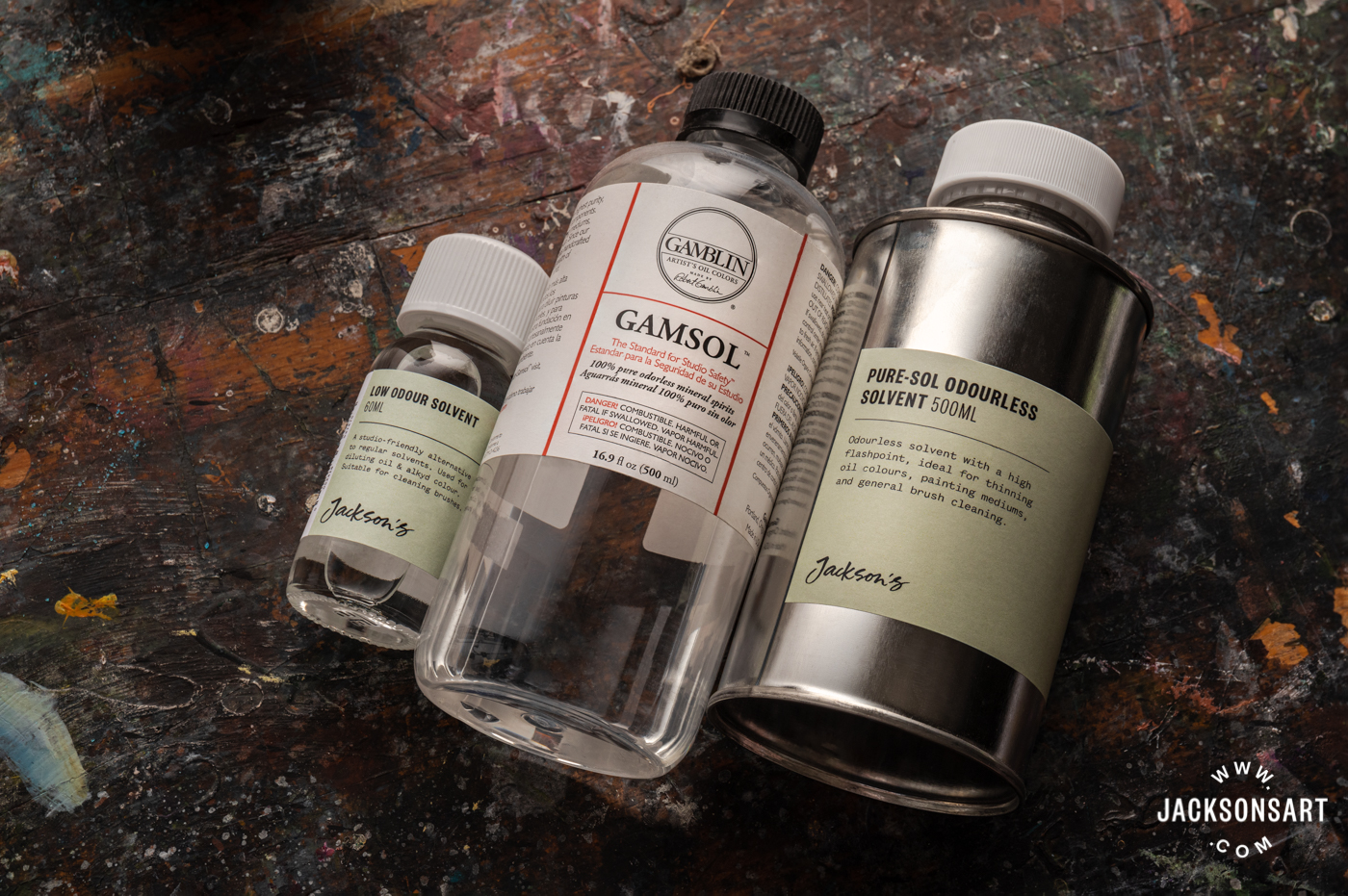
What is Aquatint?
The aquatint process creates a range of tones from light washes to rich deep tones. It is often used in conjunction with line etching techniques to achieve varied and striking prints. The technique uses an acid resistant material like powdered rosin or acrylic hard resist which is applied to the plate prior to immersion in the acid bath. The acid corrodes the particles around the resist to produce patterns and tones. The longer the plate is immersed, the richer the tones. A variety of tones can be achieved by varying the amount of time different sections of the plate are etched before being masked with stop out. To see the process in action, see our interview with printmaker Jackie Newell.
What is Drypoint?
Drypoint is a simple intaglio technique that involves scratching the surface of a plate with a metal point, inking and printing. The lines will have a rough edge known as a burr, and this creates a lovely velvety quality to the prints. It does not use acid or any other corrosive chemical to create the design. Drypoints can be made with copper, aluminium or even transparent plastic. Etching ink is pushed into the grooves or marks and the surface is wiped before printing.
Etching is a five hundred year old printmaking technique with a rich history. The use of acids to create a chemical reaction and etch a design into a plate makes the process quite magical. There is an element of surprise in the printing process, and pulling a print is always exciting. The rich, velvety lines are unique and can be combined with other etching techniques such as aquatint or mezzotint, relief printing or even painting mediums such as watercolour. The creative possibilities are endless.
Further Reading
Everything You Need to Know About Printmaking Paper
Intaglio Printing With The Fome Etching Press
Nick Richards: River Etchings And Mezzotints
Setting Up The Fome Etching Press
An Interview with Printmaker Jackie Newell
Shop Printmaking on jacksonsart.com
Etching and Intaglio
Printmaking Equipment
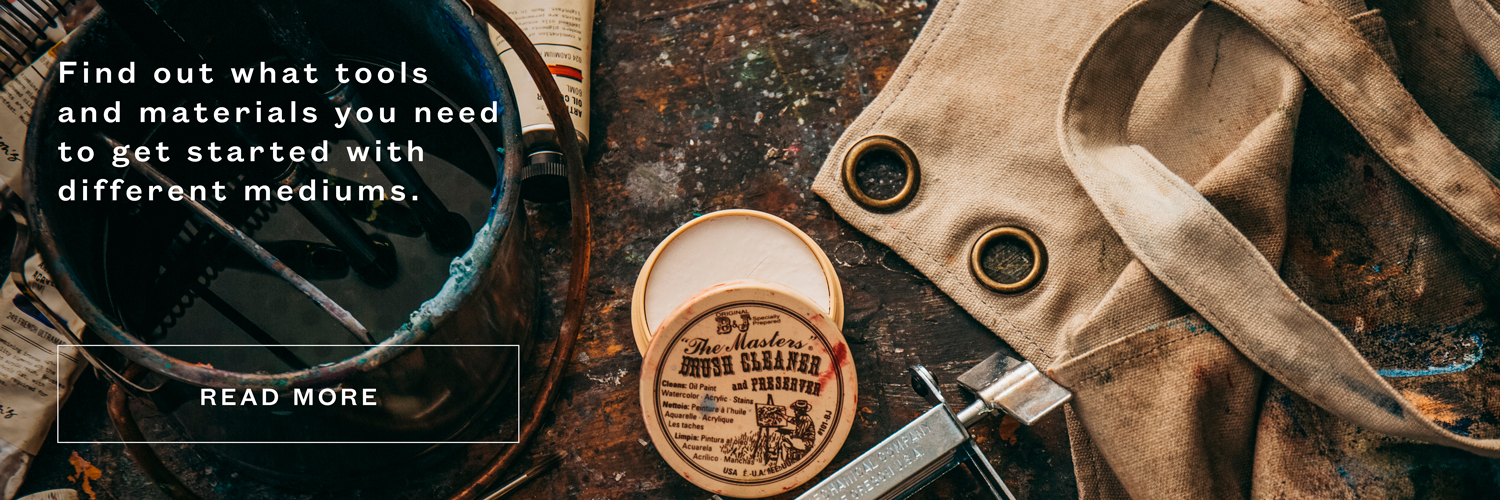
[ad_2]
Source link



